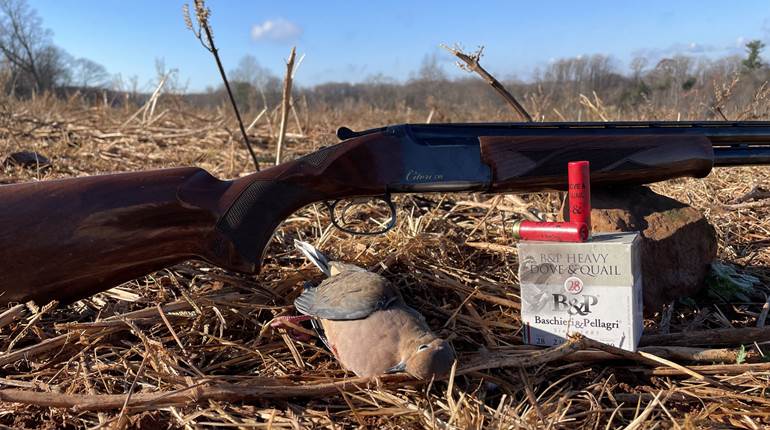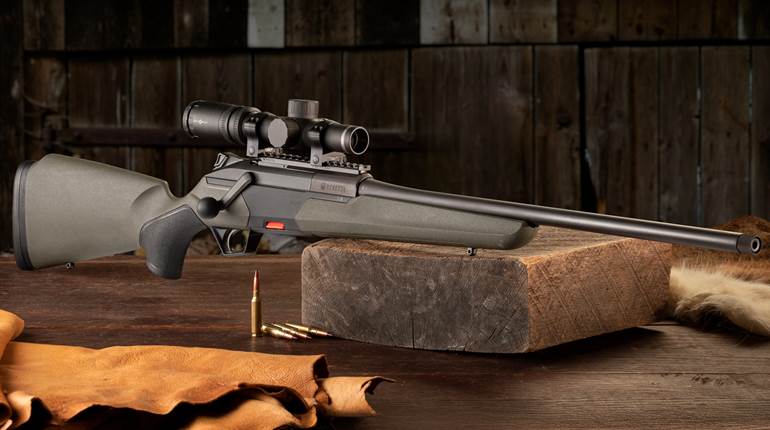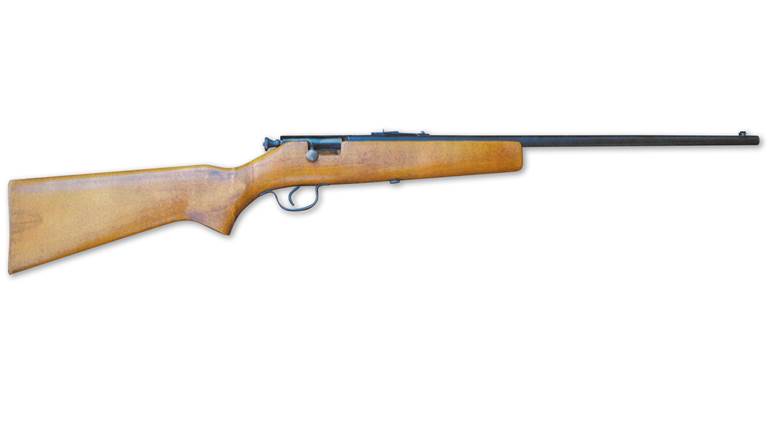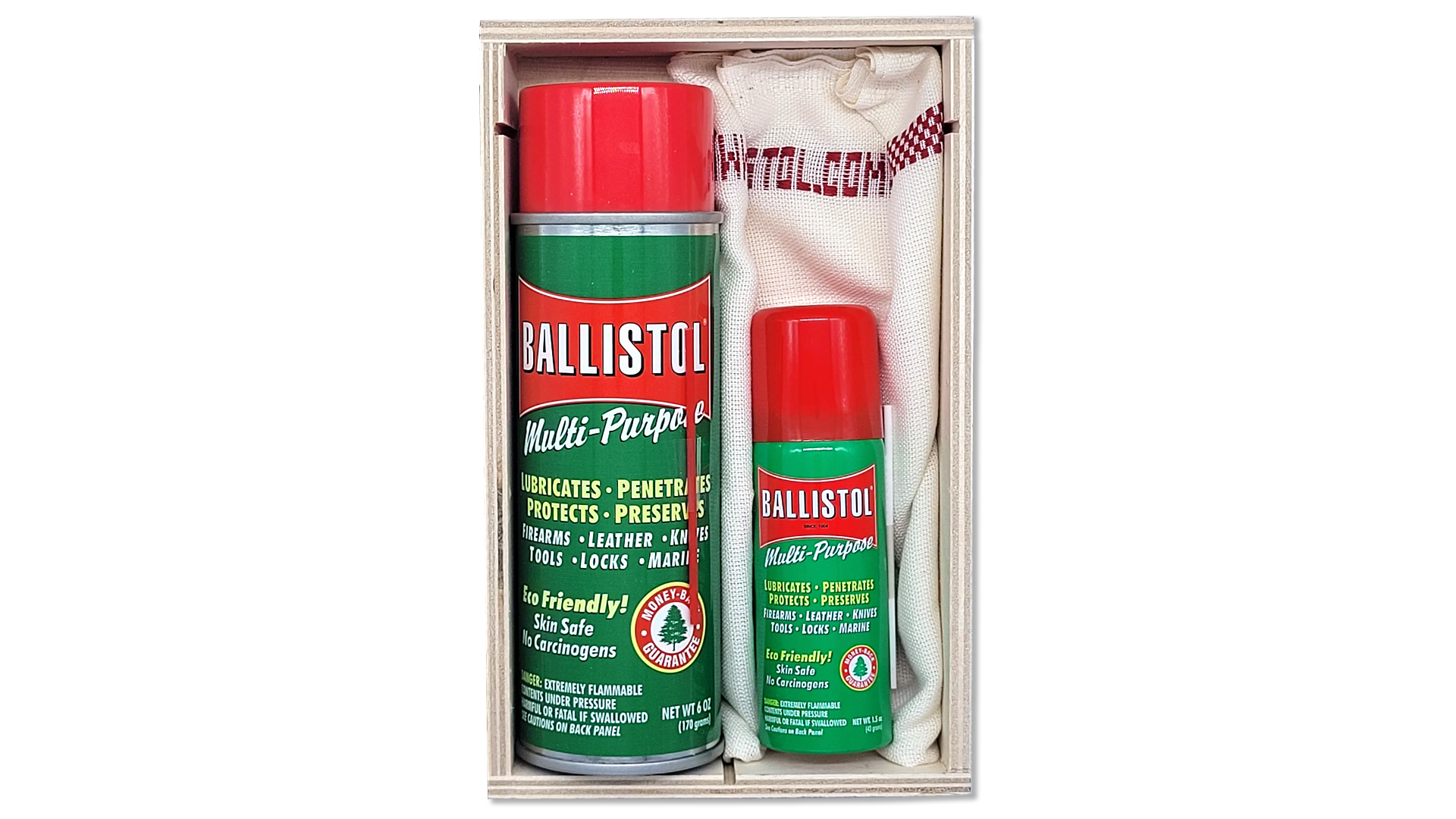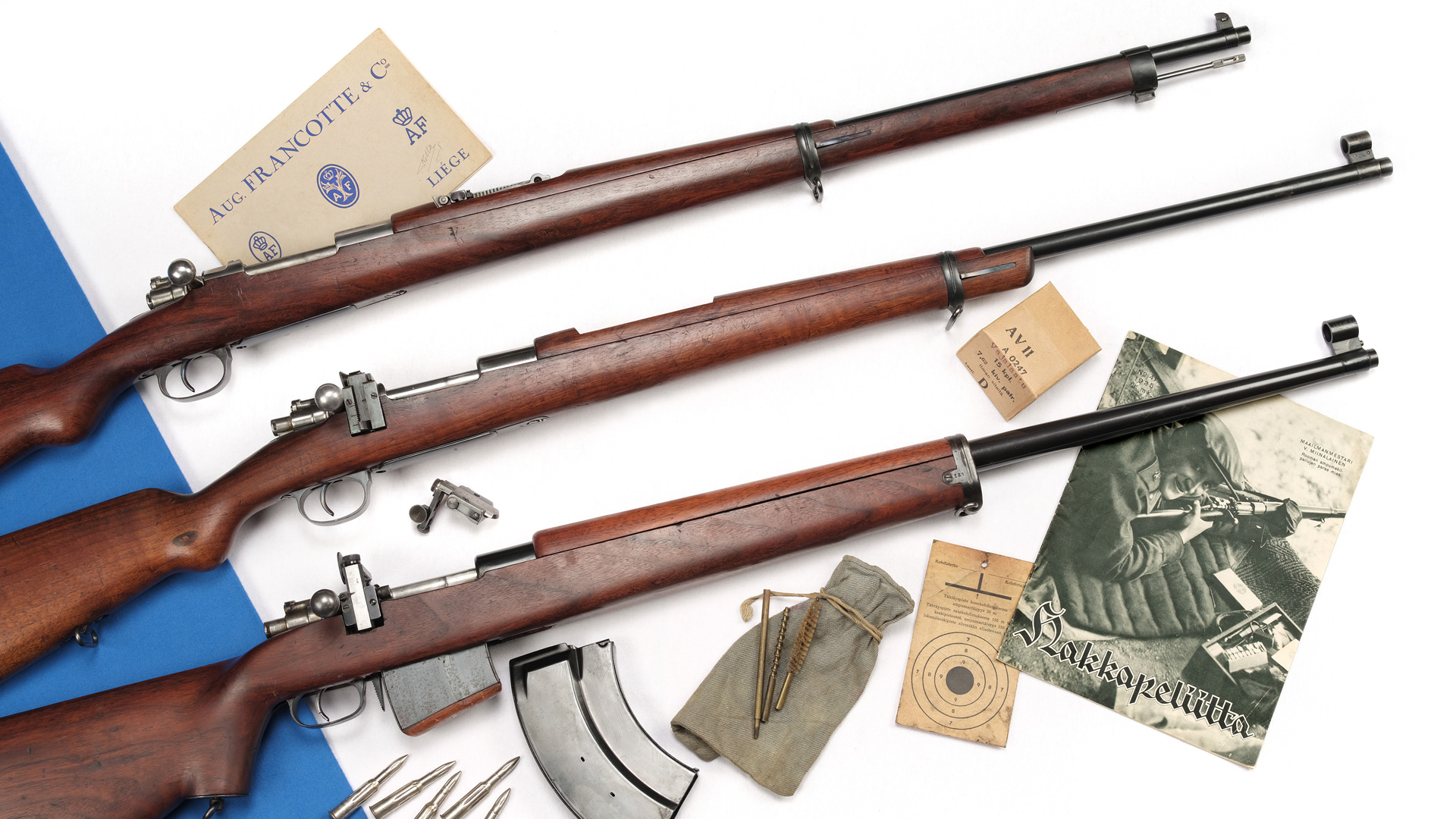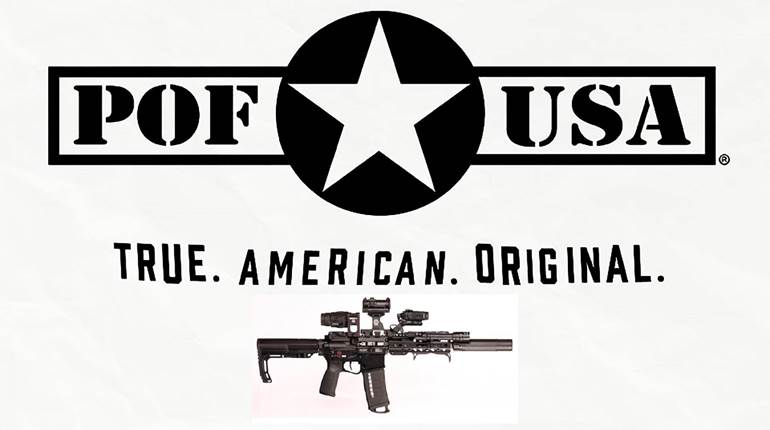
There’s no denying the adage “everything happens for a reason.” Regardless if one attributes them to divine intervention or something less spectacular, life events influence future outcomes, even if we don’t fully understand why at the time. Such proved to be the case with Melvin Forbes, owner of New Ultra Light Arms (NULA).
“My son and daughter are happy with, and well-established in, their careers,” confided Forbes. “Nobody lives forever. With more than 7,000 [NULA and Ultra Light Arms, Inc. (ULA)] rifles out there, and my children not continuing the business, [the new venture] made sense. Those people will need support,” he added. In a world chock full of selfishness, Forbes’ reply exhibited true selflessness.
The opportunity to provide future services to NULA clientele, not to mention expand his customer base, came in 2010. “About a year and a half ago I was contacted by Jonathan Brawn, COO for Titan Machine Products, Inc.,” explained Forbes. “We decided to bring to market the Forbes Rifle Model 24B, in which I shared the design criteria, technology and manufacturing techniques, then supply the stocks. Titan Machine Products, Inc., through our new company, Forbes Rifle LLC, does the rest. The parts will be fully interchangeable with those in NULA rifles,” added Forbes.
For Forbes, it wasn’t his first such partnership, nor was it a chance collaboration with Brawn. In 1999, Forbes sold his Granville, W.Va., company, then-named Ultra Light Arms, Inc., to Colt’s Mfg. Co., Inc. The Hartford, Conn., company desired to employ Forbes’ expertise in ultra-light rifles in building the aptly named Colt “Light Rifle.” It did so ... to an extent. Certainly a folly on Colt’s part, the company used injection-molded, ULA look-alike stocks from Oneida Molded Plastics of Oneida, N.Y., rather than the genuine article, the hallmark of Forbes’ rifles. Saco Defense, an entity of Colt’s, produced the metalwork—to Forbes’ dimensions—and performed the final assembly in its Maine facility.
During the abbreviated period in which the Colt Light Rifle was produced, described by the “Blue Book of Gun Values: Thirty-Second Edition” as “New 2000-disc.,” Forbes worked closely with Brawn, who was vice president of operations at Saco Defense. According to Brawn, Colt’s owned Saco Defense for a little more than a year—purchasing it in 2000—before it sold the company to General Dynamics, which eliminated Saco’s manufacture of commercial firearms.
With the Light Rifle project cancelled, Forbes decided to purchase his company back from Colt’s; however, because of litigation—reportedly ongoing even today—in which Colt’s and its entities (including ULA) were involved, he was unable to keep the former “Ultra Light Arms, Inc.” name. Forbes’ solution was simple—name his Sept. 2000 reacquisition “New Ultra Light Arms.”
Meanwhile, Brawn, looking to invest, became a partner in Titan Machine Products, Inc., a company founded in 1978 by Mark Acker, and that was a supplier for Saco Defense. The company now has 80-plus employees and a 40,000-sq.-ft. facility in Westbrook, Maine.
In his new-old company, Forbes’ first order of business was to build Light Rifles—48 in total—that were paid for, yet had not been delivered. He received no compensation for doing so. “My customers come first,” justified Forbes. See a recurring theme? Brawn, who has remained a friend of Forbes, and his now-business partner, did. They also recognized Forbes’ expertise in designing accurate, reliable, lightweight and marketable product. “We [Brawn and Acker] talked about this for the past 10 years,” said Brawn. “It was the right guy, the right product, and the right opportunity. Melvin’s product is unique and very sellable,” he added.
With future cuts to military funding seemingly inevitable, it was fortuitous timing for Titan Machine Products, Inc., which supports the production of arms such as the M2, MK19, MK47 and M242. On the commercial side, the company aids production of firearms from Spencer Rifles and Colt’s Mfg. Co., Inc., the latter having previously included the famed Single Action Army.
With the partnership forged, it was decided that the rifles should come out not from Titan Machine Products, Inc., but rather a new company using Forbes’ well-respected surname; hence the company was called Forbes Rifle LLC. Though offerings—designs, action sizes, and chambering—will likely expand, the first to emerge from the fledgling company was the Model 24B.
The Model 24B
Forbes’ method for designating NULA rifle models is simple, yet informative; they directly correlate to the actions’ overall weights in ounces. Forbes Rifle LLC continues that practice. Melvin Forbes’ first rifle, and thus action, was the intermediate-length Model 20, originating in 1982 and suitable for the .308 Win. class of cartridges. Subsequent action introductions included the Model 24, 28, 32 and 40, which, when combined with the Model 20, accommodate most chamberings from .22 Long Rifle to .416 Rigby.
“The .270 Win. and .30-’06 Sprg. are what the majority of [American] hunters use, so the choice of action [for the introductory Forbes Rifle] was simple—the Model 24,” explained Forbes. New Ultra Light Arms chambers Model 24s in .30-’06 Sprg. and its offspring, ranging from .25-’06 Rem. to .35 Whelen, as well as the European favorite, 9.3x62 mm, so the ability for diversification is present. “We’re [Forbes Rifle LLC] looking at increasing offerings, including a big range of calibers [and thus different action sizes] is possible,” reported Brawn. “Some calibers will remain NULA options only, however.”
The chrome-moly steel receiver is CNC-machined from round bar stock, and it has the same matte-black oxide finish that is found on the recoil lug, secured between the barrel and the front of the receiver, the barrel, and the bolt shroud and handle. Since the barrel is devoid of sights, the receiver is drilled and tapped for scope bases, which are included. Designed by Melvin Forbes, the Talley Mfg., Inc. 1-inch aircraft aluminum rings—with bases integral with the lower half—weigh only 2 ounces per set.
Like NULA rifles, the Model 24B has a blind, three-round-capacity, staggered-column magazine that is tensioned by a steel leaf spring beneath a steel follower. Although the use of a blind magazine further increases stock strength, in this case its primary purpose is weight reduction. With the exception of the aluminum trigger guard, there’s no bottom metal, which is traditionally steel and, thus, increases weight.
At least initially, the Model 24B will have the two-position Timney trigger currently used by NULA, though Forbes Rifle LLC is designing its own. The trigger differs from the standard Timney Remington Model 700 offerings in that Forbes installs a safety of his own design. When in the rear or “safe” position, pushing downward on the button enables the bolt to be cycled for unloading, yet the sear remains blocked. On the test rifle, the trigger exhibited no discernible creep or overtravel and broke at 2 pounds, 9.4 ounces.
Depressing the bolt-release, located on the left, rear of the receiver, enables removal of the bolt. The bolt, the body of which measures a mere 0.591 inches in diameter, weighs only 8.1 ounces. The body is, for the most part, left in white, and receives both jewelling and polishing for enhanced aesthetics. It has dual-opposed locking lugs, a Sako-style extractor and a plunger ejector. Currently the handle is brazed to the body, as is found on NULA rifles; however, Forbes commented that Forbes Rifle LLC is considering a bolt machined with an integral handle.
Whereas NULA uses Douglas barrels—customer-selected for material, length, contour and twist rate, all of which significantly contribute to the rifles’ $3,100 starting price—no such options are available from Forbes Rifle LLC. The Model 24Bs will feature standardized 24-inch, sporter-contour Bulldog barrels, though the test gun, serial No. 11-00001, had a 23-inch version.
Why Bulldog Barrels? “We [Brawn and Forbes]checked out many barrel makers, and some others were good, but Bulldog Barrels provides a product consistent with the quality we required,” explained Brawn.
Forward of the receiver the barrel measured 1.058 inches in diameter, but tapered to 0.605 inches at the muzzle, where it ended in a radius crown with an ever-so-slight recess. For both chamberings the right-hand-pattern rifling is applied at a 1:10-inch twist rate, which is sufficient for the majority of .27- and .30-cal. bullets.
Melvin Forbes’ greatest contribution to the Model 24B is what also distinguishes NULA from lookalikes, as well as earned him NRA Publication’s 2011 Golden Bullseye Pioneer Award, his carbon-fiber-reinforced Kevlar stocks. It’s also the primary reason the rifle has a 5¼-pound overall weight. Why? Designed with, and constructed using, aerospace technology, the stock weighs a mere 8 ounces when removed from the mold. Interestingly, the relatively firm, 7/8-inch-thick rubber recoil pad weighs 6 ounces, and the paint alone is 2 ounces, for a 1-pound total weight. Forbes’ stocks, which take five days to manufacture, feature a classic-style straight comb that directs recoil in such a manner that, even from NULA’s largest chamberings, is quite manageable.
For the Model 24B, NULA will manufacture the stocks, but Forbes Rifle LLC will fit—the stocks are individually glass-bedded to actions—and finish them. Melvin Forbes believes full contact between the barreled action and stock dampens vibrations, enabling bullets of differing weights to impact closely, as well as enhancing accuracy. As such, the Model 24B is glass-bedded from the tang area to the tip of the fore-end. Transposing targets during testing confirmed his belief.
The stock has a single aluminum column through which the forward action screw passes. But, according to Forbes, it’s there to prevent over-tightening, nothing more. The stock is held to the barreled action via two action screws, the rear of which, when combined with a smaller screw, secures the trigger guard. Two swivel studs allow for attachment of a sling.
Evaluation
Most custom and production rifles today are capable of delivering respectable, if not excellent, accuracy—even to levels seldom encountered in the past. But, there are some products from high-production and custom gunmakers that I’ve yet to see fail to deliver. Rifles from NULA are prime examples, so despite lacking the “extra” touches or refinements of Forbes’ custom rifles, I had no concerns about the Model 24B performing well.
To evaluate accuracy, I topped the .30-’06 Sprg.-chambered Forbes Rifle Model 24B with a Nikon Monarch UCC 4-12X 40 mm scope in the provided Talley bases/rings, and shot five consecutive, five-shot groups at 100 yards from a Coyote Jakes Shoot’n Buddy Rest. Three ammunition types—including a non-lead option—and two bullet weights were selected, with the latter specifically to check for shifts in point of impact. True to Forbes’ word, both 150- and 180-grain bullets grouped in close proximity.
Although the barrel was given time to cool between groups, such was not the case during shot strings. Despite this, the Forbes Rifle proved that for three-shot groups it’s easily a 3/4-m.o.a., if not 1/2-m.o.a., rifle, but subsequent shots enlarged overall group sizes. Vertical “stringing,” however, wasn’t as apparent as with some other light-contour-barreled rifles I’ve tested, which generally can be attributed, at least partly, to barrel heat. Rather, overall size simply increased, so there was a measure of shooter involvement. That being said, the most accurate load, Norma’s 180-grain Vulkan, still recorded an average of 1.12 inches for the 25 shots. A pleasant surprise was Remington’s Core-Lokt Express 150-grain Core-Lokt, which averaged 1.29 inches. Who doesn’t appreciate a rifle that tightly groups economical, readily available loads? I certainly do.
In the past, shooting lightweight rifles off-hand has proven problematic for me, so with accuracy testing completed, I did just that with the Model 24B. When the fore-end is grasped near its end, the Forbes Rifle is remarkably steady; in fact, I even surprised myself with some excellent groups. Melvin Forbes attributes this to rifle balance, a foremost criterion in designing his first ULA rifle, the Model 20.
Even though the Model 24B tested was chambered in .30-’06 Sprg., and more than 125 rounds were sent downrange on a single day, I felt as though I had shot only a few—no discomfort whatsoever. The little perceived recoil that the lightweight rifle produced attests to the design of Forbes’ stocks, since the not-so-soft recoil pad would do little to reduce discomfort.
Shooters who desire a NULA rifle but cannot afford the three-grand-plus price—count me among them—will appreciate the Model 24B, which Forbes quoted as retailing for $1,400. Though less expensive, the Model 24B is every bit as capable as its custom predecessors and retains its most innovative features—especially the NULA stock.
In the “Big Picture” called life, one cannot predict the future implications of one’s decisions. For lightweight rifle aficionados, fortunately Melvin Forbes decided to partner with Colt’s, which, although unfavorable at the time, resulted in a partnership enabling the production of the Model 24B, an excellent rifle in its own right, but also ensuring continuance of services to ULA and NULA customers.
“Everything happens for a reason.” Indeed.
Manufacturer: Forbes Rifle LLC; (207) 899-3254
Caliber: .270 Win., .30-’06 Sprg. (tested)
Action Type: bolt-action, center-fire rifle
Receiver: chrome moly steel
Barrel: 24"; chrome moly steel
Rifling: 1:10" RH twist
Magazine: internal, three-round staggered-column
Sights: none; drilled and tapped for scope bases
Trigger: Timney single-stage; 2-lb., 9-oz. pull
Stock: carbon-fiber-reinforced Kevlar: length of pull, 131⁄2"; drop at comb, 5/8"; drop at heel, 3/8"
Overall Length: 425⁄8"
Weight: 5 lbs., 4 ozs.
Accessories: case, Talley scope bases/rings, safety lock, instruction manual
Suggested Retail Price: $1,400












